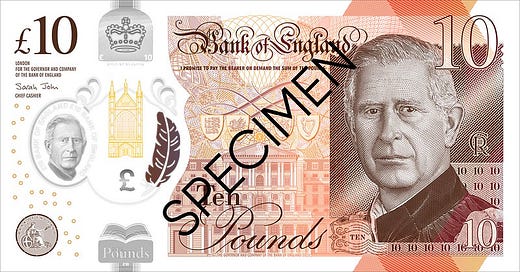While we’re on the subject of what money promises to do for us, it’s worth digging a little deeper to understand what the phrase, “promise to pay the bearer” means. It appears on every banknote we use but it might not be clear precisely what it means and how important it is to our understanding of what money is.
The full phrase, "I promise to pay the bearer on demand the sum of… " appears on all sterling banknotes under the title, Bank of England. And before 1931 it used to mean that you could swap a banknote for an amount of gold, e.g. ten gold coins called sovereigns.
If you presented your banknote to a bank, they were obliged to give you that gold in return if that’s what you wanted. This isn't the case now though.
The phrase still appears on our banknotes but banks will not swap sterling banknotes for gold (or any other metal for that matter). They will only swap it for other banknotes or coins totalling the same value. If you take a £10 note to a bank, they will give you another £10 note, two £5 notes or ten £1 coins for example. This is what we call fiat money.
It doesn’t end there
It turns out that the promise to pay the bearer basically means that the banknotes in your pocket are a debt. The bank owes you that money. If you give them a ten pound note, they are legally obliged to give you a new one in return. They are in debt to you.
References:



